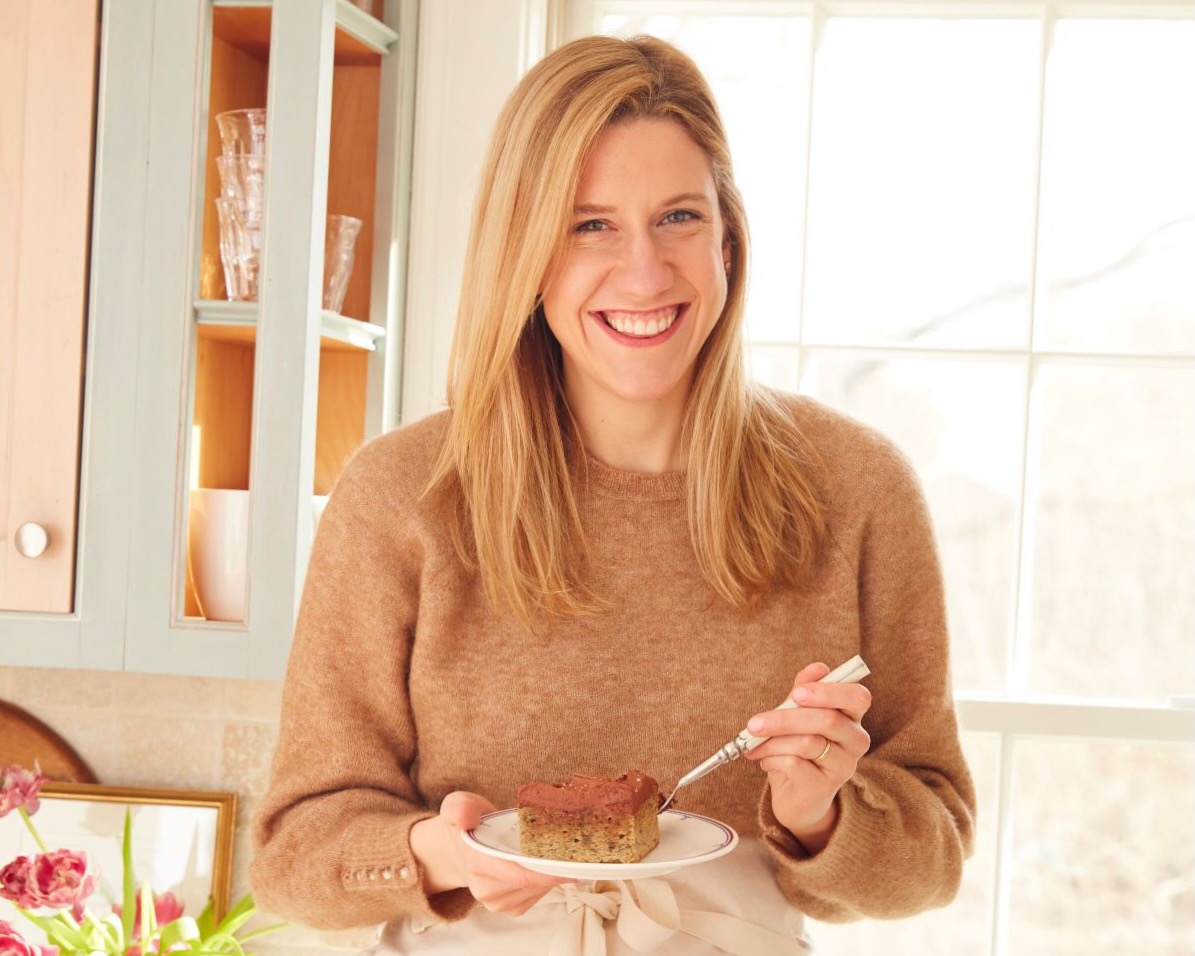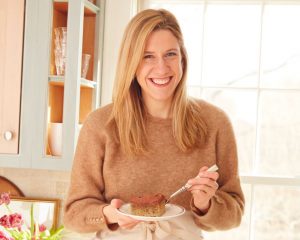
Q&A: Ina Garten protégé Lidey Heuck debuts her first cookbook
When Lidey Heuck landed a dream job out of college working with Ina Garten of Barefoot Contessa fame, she was relatively new to cooking. She’s come a long way over the past decade. After immersing herself in kitchens and the world of recipe development, the New York Times recipe contributor has just released her first cookbook, “Cooking in Real Life: Delicious & Doable Recipes for Every Day” (Simon Element, $35).
Related Articles
Carrot Tarte Tatin flips the script on French classic
Swordfish gets flavor boost from rosemary, lemon, garlic
Recipes: Make these delicious chocolate treats for Easter
Alternative cooking oils are taking over restaurant kitchens
How to pull off the perfect pie
Whether you’re planning a special occasion dinner, such as Easter or Mother’s Day, there’s plenty of inspiration in its pages, from a slow-roasted salmon dish with lemon, asparagus and leeks to a lemon and rosemary olive oil cake.
We recently caught up with Heuck to learn more about what goes into the craft of writing great recipes — and how to make some of those delicious things.
Q: You started out doing social media work with Ina Garten. What do you find interesting about the prominence of cooking and food within social media?
A: It’s changed so much since I started. It wasn’t even that long ago, but when I graduated from college, it was 2013 and the social media landscape was Facebook. Instagram was just starting. It still felt like a very new thing and not something that was being used for professional endeavors as much as for sharing with friends. I feel like it’s exploded over the last 10-ish years. It’s democratized food media in a way where anyone can share what they love and what they’re passionate about, create a following and create a business. It’s been really helpful for people to be able to pursue a career in recipes.
Q: Did you always love cooking?
A: I didn’t. I wasn’t one of those kids who wants to grow up and be Emeril or on the Food Network. But I loved paging through cookbooks, and I baked a little bit as a kid. When I was in college, I started cooking with friends, enjoying the togetherness and the fun of planning a meal, cooking, setting the table and having friends around. I still wasn’t aware of the food world as a career path. It just seemed like something that I like to do. But as I was looking for my next step after I graduated, I realized I had this odd, third-degree connection to Ina Garten. I felt like it would be amazing to work for her. I wrote her a letter and introduced myself, and she happened to be looking for someone to help her with social media at the time. It was very, very fortunate timing.
Q: Tell me more about what you learned from Ina in your years of working with her.
A: I had never thought about a recipe, besides just opening a cookbook, before working for her. The process of starting with an idea, fine tuning it and writing it in a way that is easy to understand, clear and most importantly, that it all works and is able to be made by cooks of all levels — there’s so much that goes into that. I’ve learned so much of what I know from her. I first started cooking at home, practicing and honing my skills and then gradually started to write my own recipes. It was fun to repeat the things that I learned at work and put my own spin on it.
“Cooking in Real Life: Delicious & Doable Recipes for Every Day” by Lidey Heuck is published by Simon Element, an imprint of Simon & Schuster. (Courtesy Dane Tashima/Simon & Schuster)
Q: You’ve had a number of other cooking-related jobs, recipe creator for the New York Times, prep cook, virtual cooking teacher and private chef for a family. How have those experiences shaped your approach to recipe development?
A: Cooking is different in different settings. Each each one of those experiences was super interesting, because you get to witness the way people interact with food. These were all shorter stints, with the exception of the New York Times. When I worked at The Lost Kitchen (in Maine), you’re making food for people to eat in the restaurant. The virtual cooking classes were fascinating, because I was interacting not in person but face-to-face with people who were making my recipe in front of me — it reinforced how important it is to have something really clear that people are excited about.
For a couple of months I cooked for a family, and I saw how busy the parents were. They needed help prepping dinner, so that when they came home from work, they could throw it all together.
All of these different experiences reminded me that when we cook at home, we want something that is simple and delicious — and not stressful. There’s enough other stuff going on in our lives that food should be enjoyable, the cooking process should be enjoyable, and ultimately it shouldn’t be this Herculean task to make dinner for our families each night.
Q: What inspired your cookbook? How did you know you had enough recipes to write a cookbook?
A: It’s a quite a process. I think a good cookbook should have recipes that reflect the different needs we have for cooking, so the the theme of the book is fairly broad. I started playing around with things that sounded good to me, including a bunch of easy chicken and fish recipes and recipes for people who are vegetarian or vegetable forward. I’m a big list person and started scribbling away, brainstorming different kinds of dishes that should be in this book, taking that to the kitchen and making and fine-tuning those recipes.
Q: If you had to distill it, what would you say goes into crafting a good recipe?
A: A good recipe has not necessarily a short ingredient list, but an ingredient list that doesn’t have any extra ingredients. It’s pared down to the things that make the dish special and delicious, and has ingredients that are easy to find. I live in the Hudson Valley in New York, which is a rural area. As I was writing this book, I was reminded very often about how limited my access to good quality groceries was, so I kept that a priority, making sure that the ingredients were really easy to find.
I like to strike a balance between giving enough information that the cook has everything they need without giving them so much information that the recipe is three pages long. Every word counts. Finally, testing the recipe is super important, as is providing little tips along the way, whether it’s an explanation of the inspiration behind the recipe, the paragraph that’s at the top or some helpful tips at the bottom. Those are all helpful aspects to making someone feel equipped to make the dish.
Q: How do you know when a recipe is done?
A: One thing I learned from Ina was that a big part of it is trusting your own taste and your own assessment: It tastes right, it’s well-seasoned, and the components come together in a way that makes sense. In some ways, creating a recipe is like working with a puzzle. You want it to all fit and be a seamless, smooth experience. Sometimes you have a piece you really want to fit in, because it’s a delicious ingredient or something that would make it feel really special, but it’s too fussy. It’s about finding the balance between adding enough ingredients and special touches to make it unique, while still having it be really doable.
Q: What do you love about creating recipes?
A: I love the challenge of starting with an idea, working on it and eventually feeling victorious that I’ve gotten it right. Some of these things take a lot of time, so feeling like I’ve done it is rewarding. More than that, it’s seeing people make the recipes and enjoy them with their own families and share photos. That makes me feel like what I’m doing is actually making a difference, and people are creating delicious meals with these recipes. That makes it all worth it and it’s definitely the most satisfying part of this.


